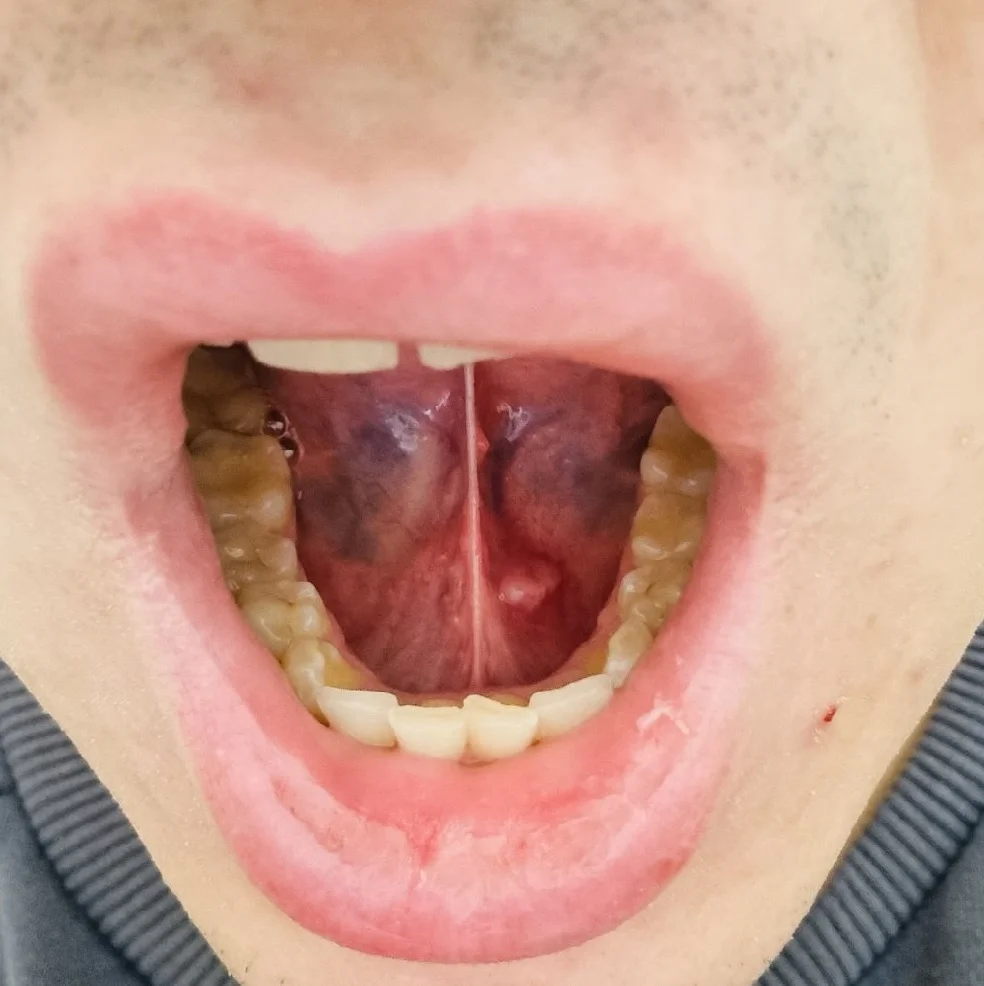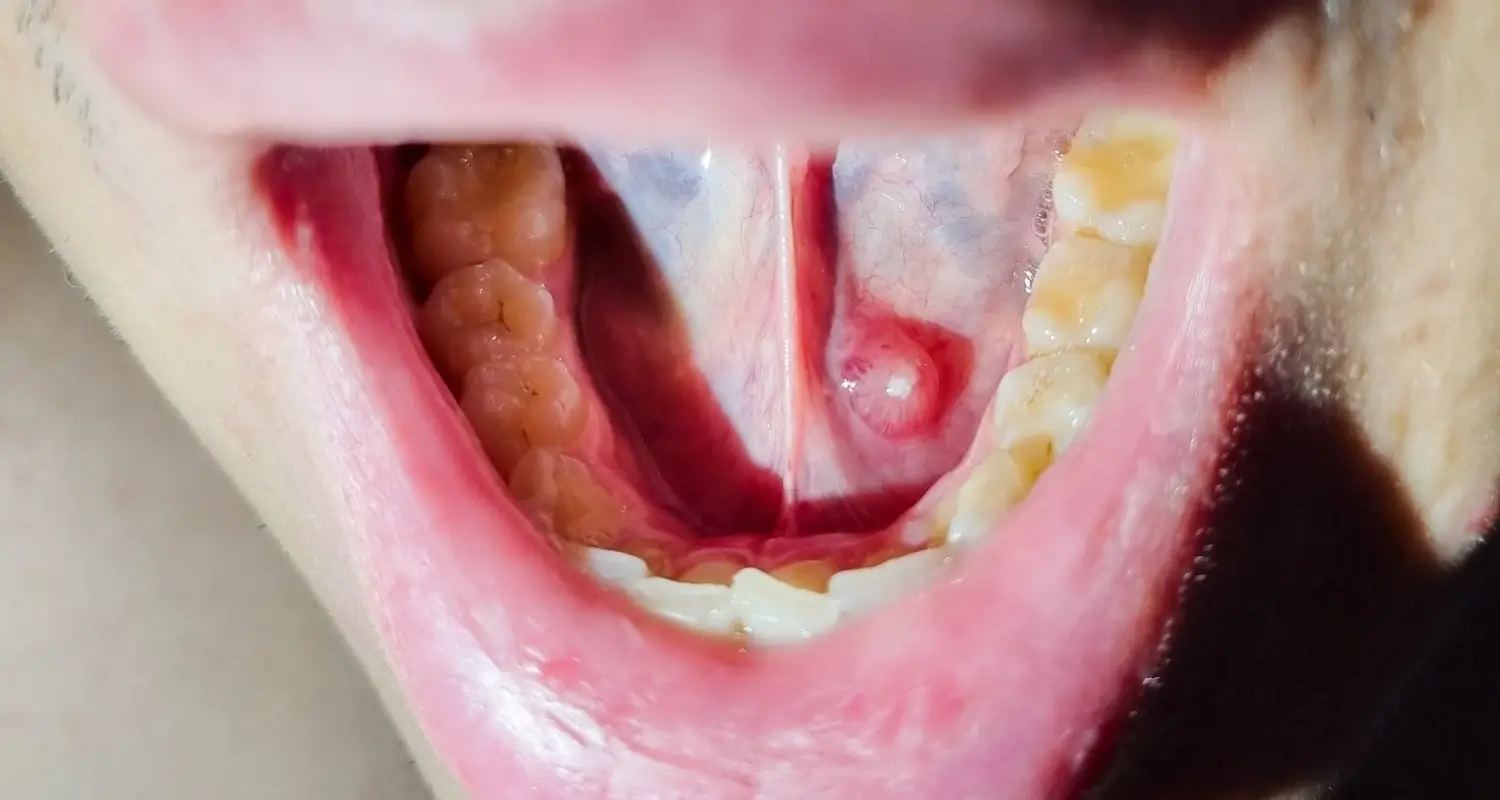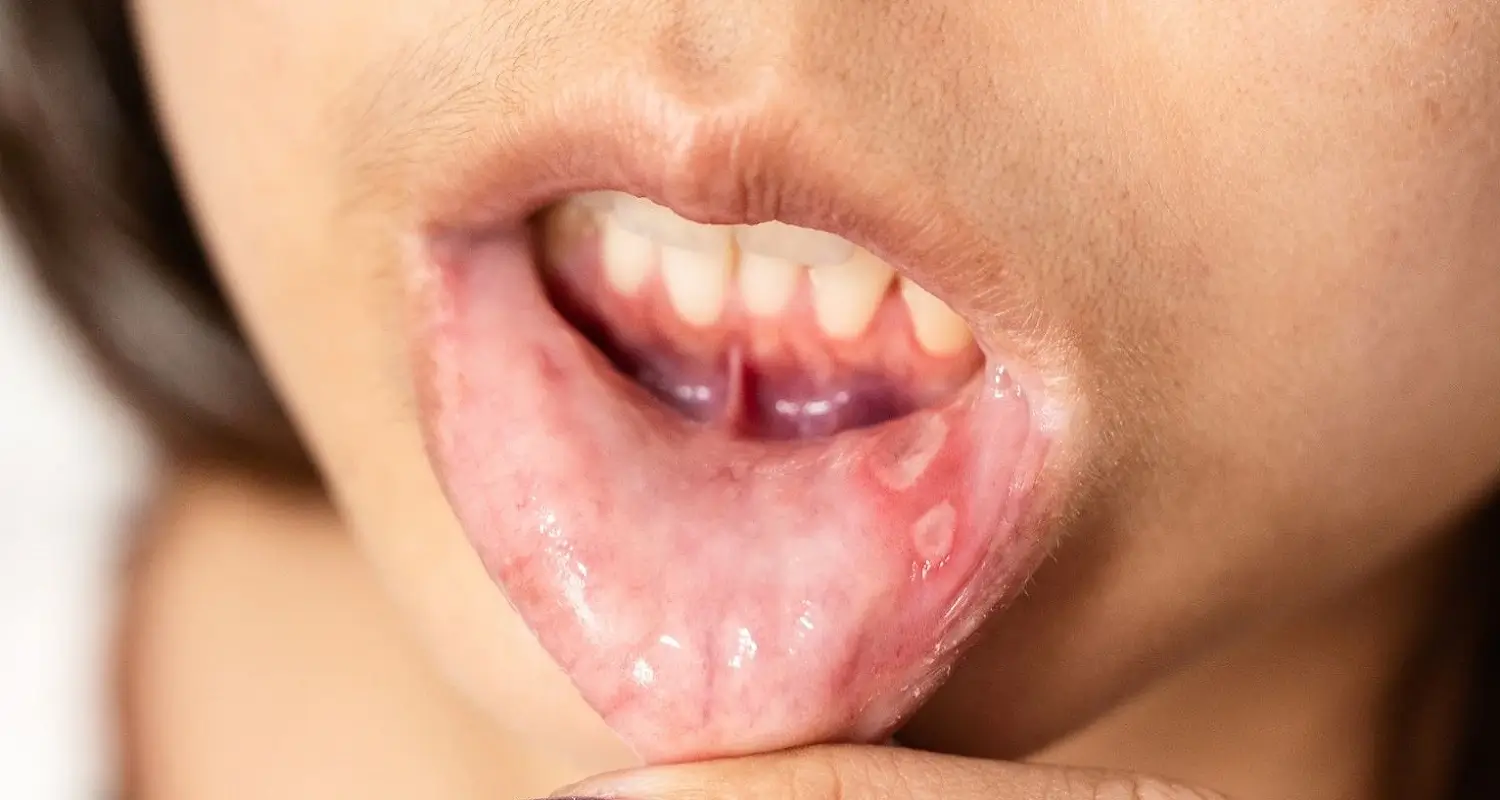Last Updated on: 12th December 2025, 05:07 am
What is Ranula?: Diagnosis and Treatment Options
A ranula is a rare but problematic oral condition that raises questions and concerns for those who suffer from it. In this article, we will explain in detail what a ranula is, its diagnosis, and the various treatment options available. Read on for a complete look at ranulas.
What is a Ranula?
A ranula is a mucus-filled bump that affects the floor of the mouth, below the tongue. It appears as a mobile mass of blue color, painless and fluctuating. In medical terms, this is a pseudocyst, that is, a collection of fluid. Unlike true cysts, the internal part of a ranula is not covered by a tissue called epithelium, since its formation occurs more spontaneously. When ranulas are large, they can cause problems with speaking, eating, and even breathing.
Causes of a Ranula
Among the causes of ranulas are:
1. Trauma to the salivary duct (most common cause)
2. Obstruction of the salivary duct due to stones or mucus plugs
3. Chronic inflammatory diseases, such as Sjogren’s syndrome
4. HIV infections that cause alterations in the salivary ducts
5. Anatomical variations
It is important to mention that not all ranulas are related to any of these causes; many times, their specific origin is not clear.
Types of Ranulas
There are two types of ranulas:
1. Oral or simple: They are usually caused by trauma to the salivary glands, although this does not happen in all cases.
2. Cervical or sunken: They are those in which the mucosal contents of the lesion penetrate through the deeper tissues of the face, toward the back and behind the muscles under the tongue. Sunken ranulas can extend to deep areas of the neck, presenting as a cervical mass. In many cases, this type of ranula does not show alterations in the oral cavity.
Wound versus Mucocele
Mucoceles are small fluid-filled bumps that usually form on the lip or inside the mouth, often as a result of injury or trauma. Ranulas are a type of mucocele, which occur on the floor of the mouth, under the tongue. Although both conditions may appear similar to the naked eye, ranulas tend to be larger and can cause more discomfort than mucoceles.
If you want to know more about mouth diseases, click here.
How Common is a Ranula?
It is estimated that 2 in every 10,000 people may have a ranula. These occur more frequently in young people.
Symptoms of a Ranula
1. Oral ranula
Patients with an oral ranula may have a painless swelling under the tongue that is translucent blue in color, similar to the belly of a frog. This injury is generally located on one side. The swelling may grow to the point of causing problems with speaking, swallowing, chewing, or breathing. Sometimes, there may be a decrease in salivary flow, which causes problems associated with hyposalivation, such as discomfort when eating or chewing.
2. Cervical ranula
This type of ranula usually presents as a painless, soft mass in the cervical area, generally preceded by some trauma to the area or dental surgery.
Can Ranulas be Dangerous?
Ranulas are benign lesions, which have a good prognosis and do not usually present a major danger to general health. However, they can present complications, including:
● Infections
● Breaking off
● Difficulty eating or breathing when dealing with a large ranula.
Diagnosis of a Ranula
Normally, ranulas are diagnosed through careful observation and examination by a specialist. During the examination, the professional can palpate the lesion to detail its consistency; if it is a true ranula, when compressed, it appears to be fluctuating and does not take on a pale color.
Although the use of diagnostic imaging is not routinely used for the diagnosis of these lesions, its use can help rule out other health problems that could be confused with a ranula or help understand the extent of the lesion prior to treatment.
Among these complementary exams are:
● Ultrasonography
● Computed tomography
● Biopsy
Treatment Options Available for a Ranula
It is essential to remember that treating a ranula varies, depending upon the individual situation. The choice of approach will vary according to the size, location, and cause of the ranula. While many ranulas can be treated effectively with minimally invasive procedures, it is important to follow the recommendations of a healthcare professional to ensure proper recovery. Among the treatment options are:
● Surgical excision
● Marsupialization
● Laser therapy
Prevention of Ranulas
Preventing the appearance of ranulas can be difficult since they are not associated with lifestyle or harmful habits. recommended to schedule regular check-ups with the dentist to detect their appearance and provide timely treatment.
Conclusion
● Although ranulas are rare, accurate diagnosis is essential for effective treatment.
● Despite being benign lesions, large ranulas can cause discomfort and complications, such as infections or difficulties eating or breathing.
● The treatment of ranulas must be adapted to the individual situation and may include surgical procedures, marsupialization, or laser therapy.
● While prevention is difficult, regular visits to the dentist can help detect them early and ensure timely treatment.
Frequently Asked Questions
Why the name ranula?
Sometimes, the word “ranula” is applied to describe other inflammatory formations on the oral floor, including true salivary duct cysts, dermoid cysts, and cystic hygromas. The origin of the term is Latin, where “rana” means “frog” and “ránula” would be something like “little frog”.
Who is susceptible to developing a ranula?
Anyone. A ranula can arise if there is damage to the duct that moves saliva from the salivary gland to the mouth, leading to a blockage. Due to this impediment, saliva stagnates in the gland, causing a cyst as it cannot drain properly. Likewise, actions such as receiving an impact on the face or biting the cheek with excessive force can be triggers for the appearance of a ranula.
What symptoms does a ranula present?
The main sign of a ranula is a clear or translucent blue lump on the floor of the mouth. They usually don’t cause pain, so you may not notice it until the cyst enlarges. If you have a simple ranula, the inflammation is limited to the sublingual gland.
At what stage of life do ranulas appear?
Ranulas tend to occur more frequently in children and young adults. However, sunken type ranulas are more common toward the end of thirty years of age. To diagnose a sunken ranula, a combination of clinical evidence, radiographic and histological studies is taken into account.
What dangers are involved in removing a ranula?
Surgical removal of the ranula or sublingual gland may involve considerable risks, such as the possibility of severe bleeding from the sublingual and lingual blood vessels, the involvement of the lingual nerve, and severing of the salivary duct.
Share:
References
1. Ranuli. (s/f-a). Nationwidechildrens.org. https://www.nationwidechildrens.org/conditions/ranula
2. Ranuli. (s/f-b). Cleveland Clinic. Retrieved on October 13, 2023, from https://my.clevelandclinic.org/health/diseases/23451-ranula
3. Baurmash, H. D. (2003). Mucoceles and ranulas. Journal of Oral and Maxillofacial Surgery: Official Journal of the American Association of Oral and Maxillofacial Surgeons, 61(3), 369–378. https://doi.org/10.1053/joms.2003.50074
4. Bowers, E. M. R., & Schaitkin, B. (2021). Management of mucoceles, sialoceles, and ranulas. Otolaryngologic Clinics of North America, 54(3), 543–551. https://doi.org/10.1016/j.otc.2021.03.002
5. Higuera, V. (2017).Ranula: Plunging, cyst, and surgery. Healthline. https://www.healthline.com/health/ranula
6. HUzaifa, M., & Soni, A. (2023).Mucocele and Ranula. StatPearls Publishing.https://www.ncbi.nlm.nih.gov/books/NBK560855/#:~:text=Mucoceles%20and%20ranulas%20result%20when,swallowing%2C%20speech%2C%20or%20respiration
7. What is a ranula? (s/f). WebMD. https://www.webmd.com/oral-health/what-is-ranula

















